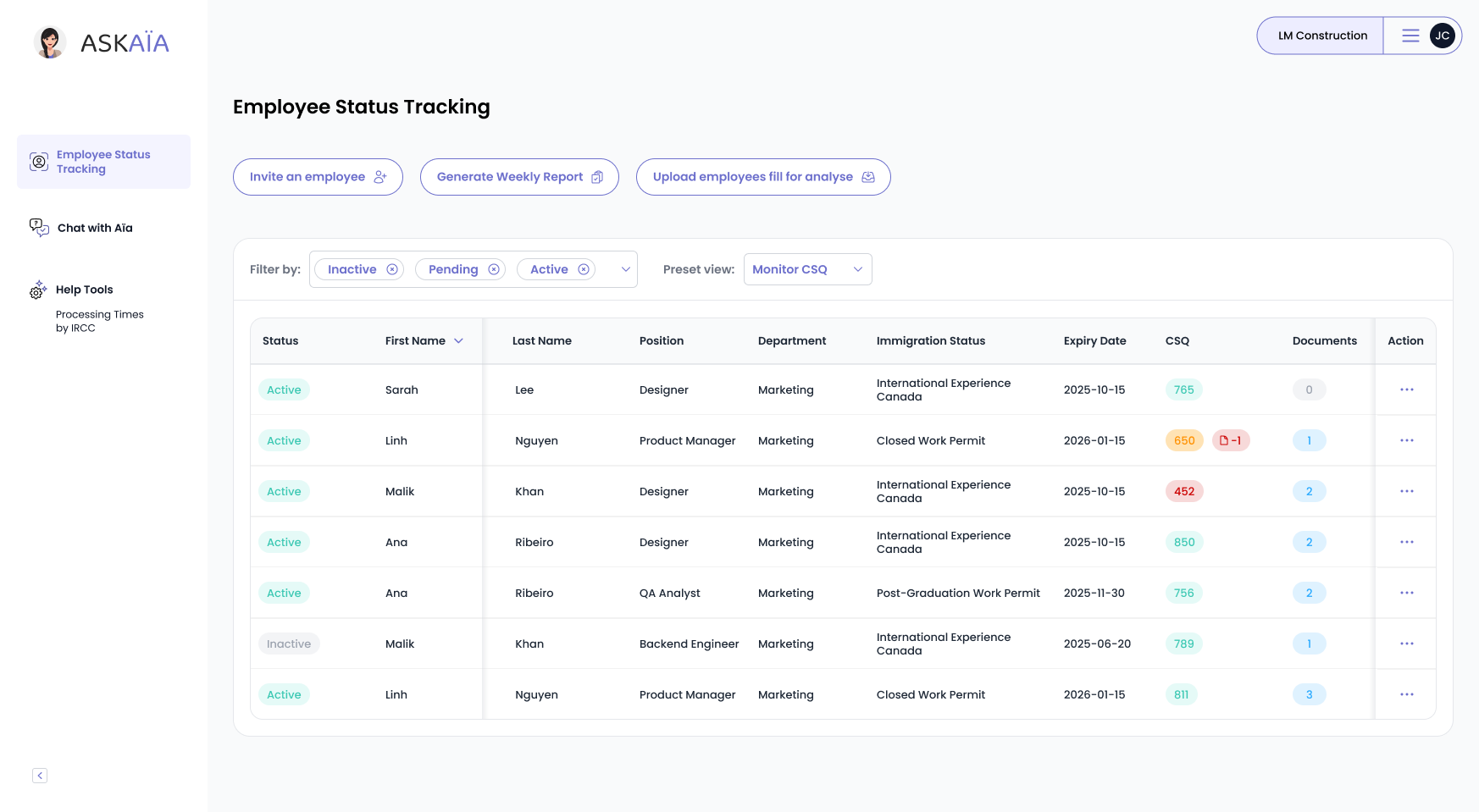Canada’s LMIA rules vary by province and sector. Knowing the difference can save time, money, and legal trouble. This guide focuses on Quebec, agri food, construction, and tech sectors, where rules shift fast.
If you are hiring or seeking work, this article breaks down region specific caps, exemptions, and how they affect LMIA approvals in 2025.
What you will find in this article
- Context: LMIA Variations Across Canada
- Quebec: Unique Exemptions and Construction Freeze
- Agri Food: National Exemptions, Local Differences
- Tech Sector: Accelerated LMIAs via GTS
- Construction: The Most Restricted Sector
- Recommended LMIA Strategies by Province
- What This Means for Employers and Workers
Context: LMIA Variations Across Canada
The Labour Market Impact Assessment (LMIA) is a federal tool. However, provinces like Quebec apply their own rules. Some sectors are exempt from advertising, while others face strict freezes or caps.
Employers and workers must adapt to this patchwork system, especially in high demand or highly regulated fields like agriculture, tech, and construction.
Quebec: Unique Exemptions and Construction Freeze
Quebec handles LMIAs differently. Its Simplified LMIA list includes over 100 occupations that bypass federal job advertising rules. This accelerates hiring for roles like cooks, drivers, and manufacturing workers.
A freeze remains in place for most construction LMIAs in Greater Montréal, Laval, and Outaouais. This moratorium, extended to November 30 2025, prevents employers from hiring foreign tradespeople via LMIA in these regions.
Tech hiring is also localized. Quebec does not use the federal Global Talent Stream (GTS). Instead, it offers comparable fast tracked options within its own framework.
Key Differences in Quebec
| Area | Quebec Rule | Federal Rule |
| Advertising | Simplified List (exempt) | Mandatory ads |
| Construction | LMIA freeze in major cities | Allowed in most regions |
| Tech Stream | Quebec specific fast track | Global Talent Stream (2 weeks) |
Agri Food: National Exemptions, Local Differences
The Agri Food Immigration Pilot, extended until May 14 2025, allows sector specific LMIA exemptions for meat processing, greenhouse work, and mushroom farming.
These roles are LMIA eligible year round and follow simplified procedures. In provinces like Manitoba and Saskatchewan, applications move faster due to acute labour shortages.
Employers in Quebec must also meet French language and wage compliance standards set by provincial authorities.
Example: Processing Time Comparison
| Province | Agri Food LMIA Avg. Time |
| Manitoba | 3 to 4 weeks |
| Ontario | 5 to 7 weeks |
| Quebec | 6 to 8 weeks + French requirement |
Tech Sector: Accelerated LMIAs via GTS
This federal program is not used in Quebec. Instead, Quebec maintains its own tech hiring criteria and processes.
In provinces like British Columbia, Ontario, and Alberta, GTS supports both startup and enterprise tech recruitment.
Eligibility Snapshot for GTS
| Role | Wage Threshold | GTS Processing |
| Software Engineer | Prevailing wage | 2 weeks |
| Data Scientist | Prevailing wage | 2 weeks |
| UI Designer | Not eligible | Standard LMIA |
Construction: The Most Restricted Sector
Construction faces some of the most rigid LMIA rules in Canada. In Quebec, most trades are blocked from LMIA processing in urban centers due to union influence and local labour mandates.
Alberta imposes a 10 percent cap on the proportion of temporary foreign workers per business. Ontario has similar restrictions in unionized zones, especially in the Greater Toronto Area.
Employers must explore alternatives like interprovincial mobility or International Mobility Program (IMP) pathways.
Construction LMIA Limits
| Province | Restrictions |
| Quebec | Freeze in Montréal, Laval, Outaouais |
| Alberta | 10 percent workforce cap |
| Ontario | GTA union zone restrictions |
Recommended LMIA Strategies by Province
Employers and foreign workers must align their hiring strategies with regional LMIA conditions. This table summarizes optimal approaches for navigating provincial rules, leveraging exemptions, and avoiding capped or restricted pathways.
| Province | Recommended Strategy |
| Quebec | Use the Simplified LMIA list, explore IMP for restricted trades |
| Ontario | Use GTS for tech, avoid union-restricted zones in construction |
| Alberta | Use GTS, monitor 10 percent cap on foreign workers |
| Manitoba | Prioritize agri-food roles, especially meat and greenhouse jobs |
| BC | Use GTS and standard LMIA for high demand roles |
What This Means for Employers and Workers
Understanding regional LMIA rules is essential. Quebec offers simplified access in some occupations but imposes strict bans in others. Agri-food roles are LMIA-friendly nationwide. Tech hiring is fast-tracked federally, but not in Quebec.
Construction remains the most restricted sector. Employers should align job offers with region-specific eligibility. Workers are advised to target provinces and sectors with open policies and faster timelines.
Book a free consultation with our team. Get expert advice tailored to your sector, region, and workforce strategy.

Let’s get your demo started
Book a demo
You May Also Like
These Related Stories

Close Compliance Gaps Fast: Avoid Six-Figure TFW Penalties in Canada
Fines for paperwork lapses under Canada’s Temporary Foreign Worker Program (TFWP) have risen sharply, up 31 % year‑over‑year to $2.1 million, while em …

Quebec Reopens PSTQ: Act Now to Secure Your PR
Quebec’s immigration door is reopening. As of July 2025, the PSTQ moratorium lifts, bringing new hope for workers and students already in the province …
.jpg?width=1200&height=1000&name=do-you-really-need-an-lmia-employer-options-for-hiring-foreign-talent-%20(1).jpg)
LMIA 101: What Canada Expects Before You Hire a Foreign Worker
If your Canadian company is hiring foreign workers, you may need a Labour Market Impact Assessment (LMIA). But do you know when, and why? For HR teams …


